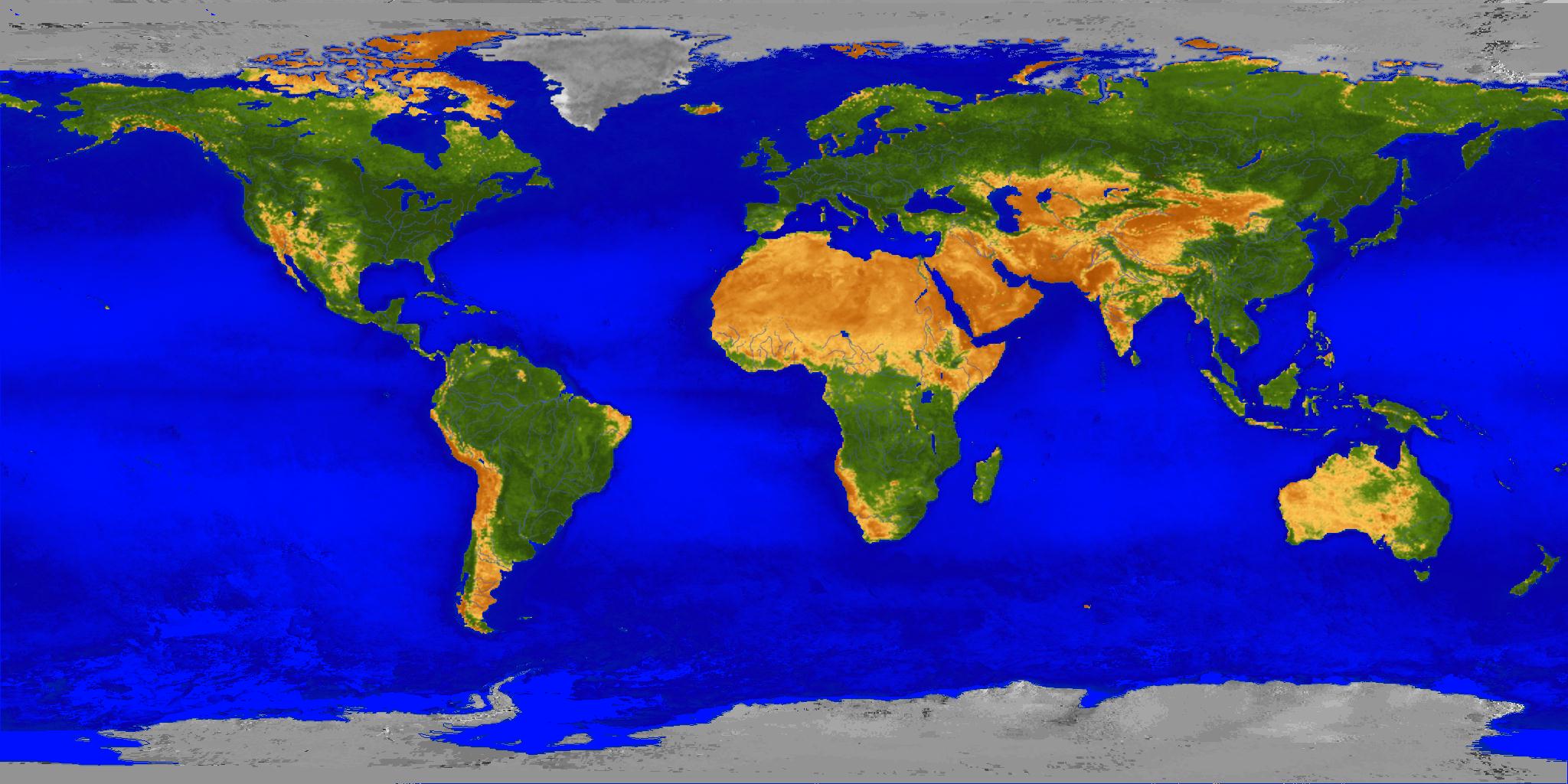 Earth, also called the world (and, less frequently, Gaia or, in Latin, Terra), is the third planet from the Sun, the densest planet in the Solar System, the largest of the Solar System's four terrestrial planets, and the only astronomical object known to accommodate life. The earliest life on Earth arose at least 3.5 billion years ago. Earth's biodiversity has expanded continually except when interrupted by mass extinctions. Although scholars estimate that over 99 percent of all species of life (over five billion) that ever lived on Earth are extinct, there are still an estimated 10–14 million extant species, of which about 1.2 million have been documented and over 86 percent have not yet been described. Over 7.3 billion humans live on Earth and depend on its biosphere and minerals for their survival. Earth's human population is divided among about two hundred sovereign states which interact through diplomacy, conflict, travel, trade and communication media.
Earth, also called the world (and, less frequently, Gaia or, in Latin, Terra), is the third planet from the Sun, the densest planet in the Solar System, the largest of the Solar System's four terrestrial planets, and the only astronomical object known to accommodate life. The earliest life on Earth arose at least 3.5 billion years ago. Earth's biodiversity has expanded continually except when interrupted by mass extinctions. Although scholars estimate that over 99 percent of all species of life (over five billion) that ever lived on Earth are extinct, there are still an estimated 10–14 million extant species, of which about 1.2 million have been documented and over 86 percent have not yet been described. Over 7.3 billion humans live on Earth and depend on its biosphere and minerals for their survival. Earth's human population is divided among about two hundred sovereign states which interact through diplomacy, conflict, travel, trade and communication media.According to evidence from radiometric dating and other sources, Earth was formed about 4.54 billion years ago. Within its first billion years, life appeared in its oceans and began to affect its atmosphere and surface, promoting the proliferation of aerobic as well as anaerobic organisms and causing the formation of the atmosphere's ozone layer.[clarification needed (O3 created from O2 + UV radiation)] This layer blocks the most life-threatening parts of the Sun's radiation, enabling life to flourish on land as well as in water. Since then, the combination of Earth's distance from the Sun, its physical properties and its geological history have allowed life to thrive and evolve.






